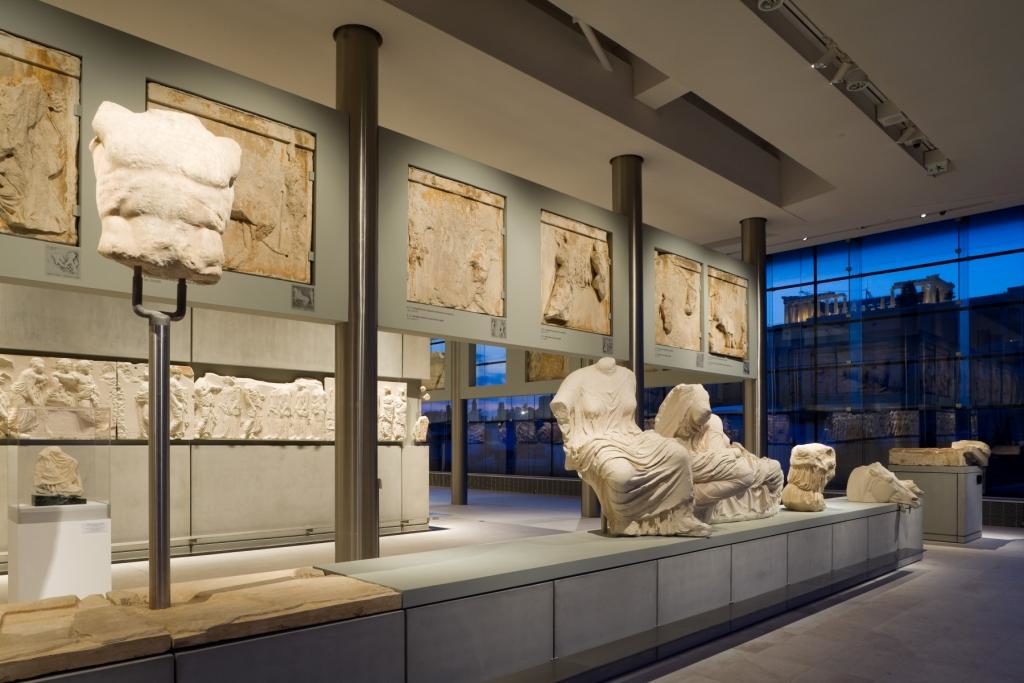
Acropolis Museum Director Professor Dimitris Pandermalis said on Monday that Turkish academics doubt the claims that the Ottomans gave permission, a ‘firman’ to Lord Elgin to remove the Parthenon sculptures.
The startling new claims were made by the museum’s director during the opening of the International Workshop entitled "Reunification of the Parthenon Sculptures" held at the Acropolis Museum which was opened by the President of the Hellenic Republic Prokopis Pavlopoulos.
Pandermalis, was referring to the findings of two Turkish researchers of the Ottoman archives, Professor Zeynep Aygen and historian Orhan Sakin, which they presented at the Acropolis Museum last February, as well as the Acropolis Museum's own research into the period between 1800-1831, spanning the end of Ottoman rule in Greece and the conversion of the Acropolis into an archaeological site, relating three stories concerning the vandalism of the Marbles by Elgin.
According to the Turkish academics the Ottoman Empire attached too great a value to the ancient sculptures on the Acropolis to give them away, and if proven, would delegitimise the long held claim by the British government that they did not trade in stolen artefacts.
"This is the first time that we are shedding light (on the Ottoman archives), because so far all that has been written was based on what we know from Western writers. We are interested in what was really happening in the Ottoman Empire at that time and whether the claim is true that there is a firman (allowing the removal of the Parthenon Marbles)," said the director of the Acropolis Museum, referring to the two Turkish scientists.
Pandermalis stressed that "in her speech, Professor Aygen said that ancient stones were valued by the Turks also and that is why monuments were saved. The only person in the empire with the authority to allow a monument to be moved was the sultan himself. The document that is preserved and which they call a "firman" is not, in fact, a firman, it is not an order. It is an administrative letter from the Kaimakam of Constantinople to the authorities of Athens. And it is very interesting, when reading the papers of the other side, the English, that there too, it seems very clear that it is not a permit that allows the Parthenon to be stripped bare but a permit for the excavation of volumes of earth around the Parthenon. This [document] states that none of the Acropolis generals must prevent the removal of what has fallen [as a result of] the bombing by Morosini. Detachment from the building is not mentioned anywhere," noted Pantermalis.
At the time of the looting of the Acropolis, Pandermalis added, citing the presentation made by Prof. Aygen, "licenses were issued, but they were for trips so that Elgin and his representative Philip Hunt should not have to pay taxes and to provide them with security and accommodation - but not a license to remove stones and sculptures from the monument itself."
"We know that four firmans were required in order to move four fragments of a sarcophagus, and every detail of what you wanted to take was written down in the firman, and not just 'some stones'. So there are too many weak points that the Turkish side is researching and we are glad to have a historically proven picture of how services operated at that time, what it was necessary to do. This makes the Western texts comprehensible, where this letter is referred to as a firman when it is not," concluded Pantermalis.
"The Parthenon sculptures are a special case of abduction and removal of foreign works of art because they were taken from monuments of unique artistic value that are preserved to this day and are a symbol of European culture," said Christophoros Argyropoulos, lawyer and president of The Melina Mercouri Foundation and the Greek Consultative Committee for the Reunification of the Parthenon Sculptures.
"Today's initiative coming from the Presidency of the Republic and personally by a President who is the most appropriate to support the rights of the Parthenon and our country with the most serious scientific, historical, legal and moral arguments, declares the constant desire of Greece and the Greek people to continue this national effort and together send the strongest message that the Parthenon Sculptures have a homeland. They have identity, memory and a voice, and this voice is becoming ever stronger," said Marianna Vardinoyannis, UNESCO Goodwill Ambassador.
The conference was also addressed by Culture and Sports Minister Myrsini Zorba, who underlined that "Greece is the birthplace of the Parthenon Sculptures, Athens is their city, the Acropolis and its Museum are their natural location. The only place on Earth where one can have the unique, exquisite aesthetic experience of the Parthenon and the Marbles."
The conference, was jointly organised by the Greek Presidency, the Ministry of Culture and Sports, the International Association for the Reunification of the Parthenon Sculptures and the Acropolis Museum.


